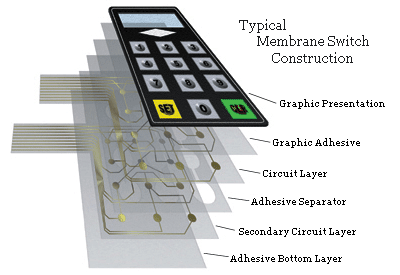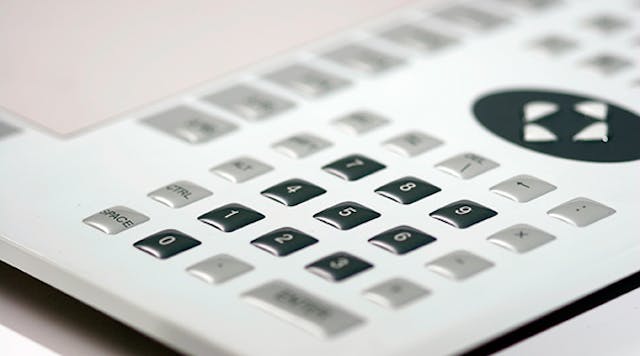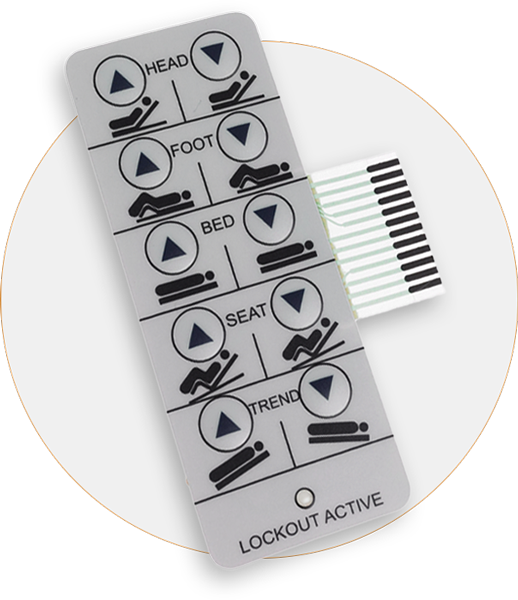Understanding the Relevance of Membrane Switches in Interface
Membrane switches are indispensable elements in the design of reliable user interfaces, promoting not just functionality however also boosting aesthetic allure and user communication. Their distinct attributes, such as resistance to environmental variables and adjustable layouts, make them suitable for a diverse selection of applications throughout multiple sectors. As we explore the numerous advantages and future patterns related to Membrane innovation, it becomes clear that these switches are greater than just elements; they stand for a merging of development and usefulness. The implications of this innovation on customer experience deserve analyzing additionally.
What Are Membrane Buttons?

The spacer layer, which contains adhesive properties, permits the splitting up of the circuit layer from the overlay, making sure that the switch remains in a non-activated state until pushed. When pressure is put on the overlay, it presses the spacer layer, connecting the space and completing the circuit in the underlying layer. This layout not only decreases the physical room needed for conventional mechanical switches yet likewise enhances the durability of the tool, as Membrane buttons are normally resistant to dust, dampness, and other environmental aspects.
Typically found in applications varying from consumer electronic devices to medical tools, Membrane buttons are important to modern innovation, offering a reliable and easy to use interface that lines up with modern style needs.
Advantages of Membrane Switches
While many switch innovations exist, Membrane Switches offer distinctive advantages that make them specifically desirable in different applications. Among the primary advantages of Membrane switches is their small layout, which permits space-saving applications in tools where genuine estate is restricted. Their slim profile not just boosts aesthetic charm yet also assists in light-weight construction.
One more substantial advantage is their resistance to environmental aspects. Membrane buttons are generally secured versus dampness, dust, and pollutants, making them suitable for usage popular environments, such as medical gadgets and commercial devices. This resilience extends the life expectancy of the switch, reducing upkeep prices and boosting integrity.
Moreover, Membrane switches can be personalized to satisfy certain layout needs, incorporating unique graphics and colors that enhance user interaction. Their tactile feedback options can also be tailored to offer a rewarding individual experience. Furthermore, Membrane switches are cost-effective, particularly in high-volume applications, as they can be produced efficiently.
Applications in Various Industries

In the customer electronics field, Membrane switches my explanation are widespread in gadgets such as microwaves, washing makers, and push-button controls. Their responsive comments and aesthetic alternatives enhance customer experience while supplying a sleek, modern-day look. In addition, automobile manufacturers use Membrane switches in control panel controls and infotainment systems, where room is limited, and customer interaction is critical.
Additionally, the industrial market leverages Membrane switches in control panels for equipment and equipment, enabling for intuitive operation in usually severe settings. Their resistance to chemicals and moisture makes sure long life and reliability in these applications. Generally, the flexibility of Membrane Switches adds significantly to their extensive usage, making them essential in different technical domains.
Style Factors To Consider for Membrane Switches

When creating Membrane buttons, numerous key considerations should be considered to make certain optimum functionality and user experience. The option of materials is vital; choosing long lasting, top notch substratums can improve the switch's durability and resistance to ecological elements such as dampness and temperature changes.
Second of all, the style of the visuals overlay need to prioritize clarity and simplicity of usage. Symbols and message must be clear, and the layout should facilitate intuitive communication (membrane switches). In addition, tactile responses is necessary; including a responsive dome or other mechanisms can boost the customer experience by supplying physical confirmation of activation
An additional important factor is the button's electrical performance. Designers must make certain that the conductive traces are correctly made to minimize resistance and avoid signal disturbance. This involves analyzing the called additional resources for actuation force and ensuring compatibility with the electronic elements they will user interface with.

Future Trends in Membrane Modern Technology
As technology remains to advance, Membrane buttons are poised to develop substantially, driven by advancements in materials and manufacturing techniques. One emerging trend is the incorporation of advanced products, such as conductive inks and flexible substrates, which enhance resilience and decrease the general weight of Membrane switches. These materials not just enhance the tactile feedback yet additionally enable the design of switches that can stand up to harsher environmental problems.
Furthermore, the combination of touch-sensitive technologies is transforming standard Membrane Switches into even more interactive individual interfaces. Capacitive touch sensors installed within Membrane switch panels can provide an extra intuitive and responsive individual experience, straightening with the growing need for sleek, contemporary styles in customer electronics.
Furthermore, innovations in printing methods, such as electronic and 3D printing, allow rapid prototyping and modification of Membrane buttons. This versatility allows suppliers to respond much more rapidly to market demands and customer choices.
Lastly, sustainability is coming to be a significant focus, with producers discovering eco-friendly products and processes. As these trends unfold, the future of Membrane modern technology guarantees enhanced functionality, visual allure, and ecological responsibility, strengthening their role in innovative interface throughout numerous sectors.
Conclusion
In conclusion, Membrane Switches represent an essential part in the layout of user interfaces, incorporating capability with visual flexibility. click here now As improvements in modern technology continue, the development of Membrane switches is anticipated to more improve user interfaces, driving technology and enhancing use in a significantly complicated technical landscape.
Membrane switches are indispensable elements in the design of effective user interfaces, helping with not only functionality but additionally boosting aesthetic allure and individual interaction.Membrane Switches serve as a vital component in different individual interfaces, helping with a smooth interaction in between users and digital devices.While various switch technologies exist, Membrane Switches offer unique advantages that make them specifically preferable in numerous applications.Moreover, Membrane switches can be customized to meet particular style demands, integrating one-of-a-kind graphics and shades that boost customer communication.In verdict, Membrane Switches represent a crucial element in the style of individual interfaces, integrating performance with aesthetic versatility.